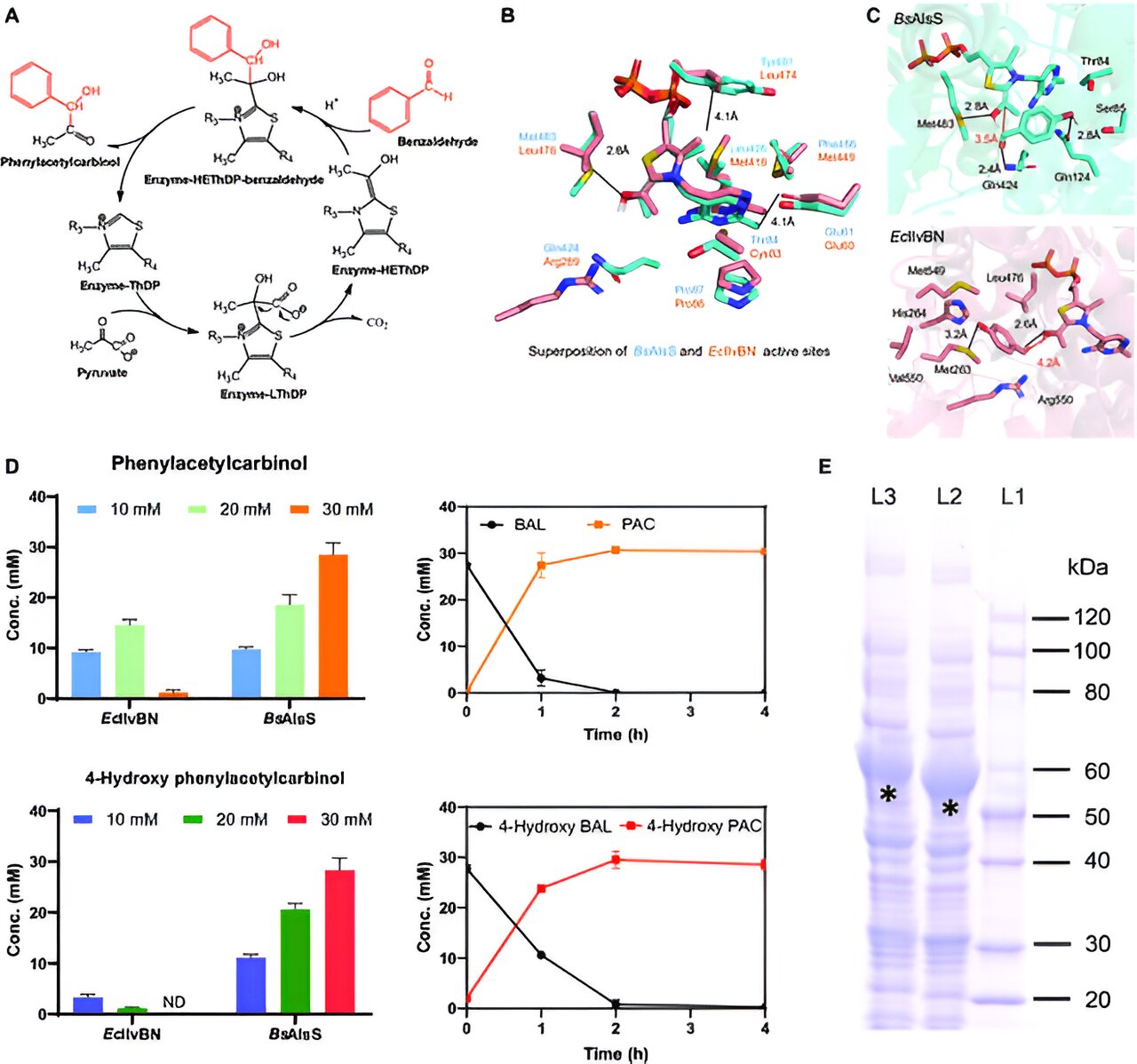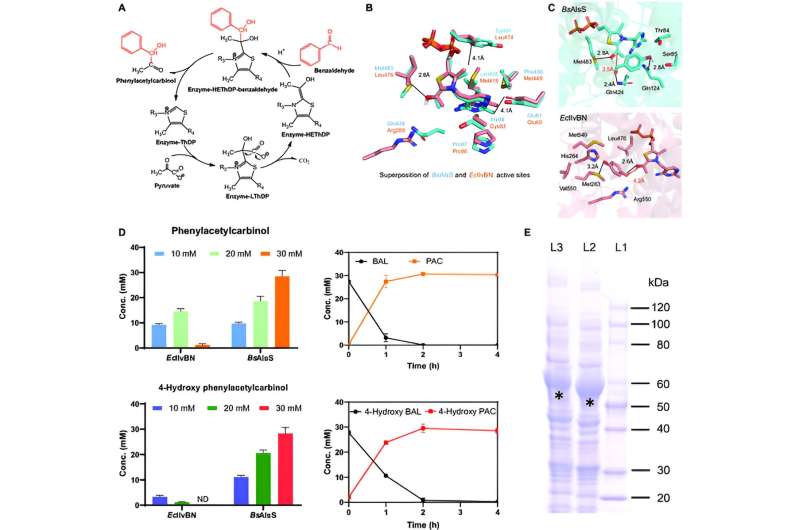

Ephedra-type alkaloids, a class of naturally occurring compounds derived from plants in the genus Ephedra, have long held interest in the pharmaceutical industry due to their stimulant and airway widening effects. These alkaloids are used for the treatment of conditions such as asthma and low blood pressure.
While these alkaloids are traditionally extracted from plants, there is increasing interest in synthetic versions that offer enhanced properties and fewer side effects. Synthetic alkaloids with modifications on the phenyl ring and N-group have shown improved pharmacological effects. However, current chemical synthesis methods are environmentally challenging and limited in their scope.
To address these limitations, a group of researchers from Xiamen University, China, led by Professor Jifeng Yuan, sought to develop a more efficient two-step enzymatic approach to synthesize Ephedra-type alkaloids. The team successfully synthesized diverse Ephedra-type alkaloids with improved yields and introduced new N-group modifications.
The novel approach enhances the structural diversity of synthetic Ephedra-type alkaloids, potentially leading to novel drug candidates with broader pharmaceutical applications. Their study was published in BioDesign Research on 3 September 2024
First, the researchers began by checking for suitable enzymes for the synthesis process. They discovered that acetolactate synthase from Bacillus subtilis (BsAlsS) exhibited a superior ability to perform carboligation.
Carboligation involves the condensation of aromatic aldehydes with pyruvate to form α-hydroxyketones, which are crucial intermediates in alkaloid synthesis. This enzyme’s effectiveness in carboligation was crucial for generating a range of phenylacetylcarbinol (PAC)-class α-hydroxyketones.
They then performed computational simulations to compare BSAlsS with the well-characterized enzyme EcIlvBN from Escherichia coli. These simulations focused on finding the enzyme’s substrate binding sites and catalytic residues.
“We tested the activity of BsAlsS using benzaldehyde (BAL) and 4-hydroxybenzaldehyde (4-HBAL), using both purified enzyme preparations and whole-cell biocatalysts. After confirming the initial results, we expanded our testing to include a variety of substituted aromatic aldehydes,” explains Prof. Yuan.
The team evaluated substrates with different substitutions, such as hydroxy, methoxy, and halogen groups, to see how well they converted to α-hydroxyketones. The efficiency of these reactions was assessed by calculating conversion rates and validating the products using a scientific instrumentation technique called mass spectrometry.
Further, they screened several imine reductases (IREDs) to test their capability for reductive N-alkylamination (introduction of alkyl groups to an amine) of α-hydroxyketones. The IREDs included AspRedAmQ240A from Aspergillus oryzae, IR77A208N from Ensifer adhaerens, and IRG02 from Streptomyces albidoflavus. Enzyme activities were assessed by testing different amine partners and measuring the conversion of PAC to secondary amines.
The ratio of amine equivalents was optimized to enhance conversion rates, and the potential of IREDs for generating diverse synthetic Ephedra-type alkaloids was explored. Additionally, they developed a one-pot biocatalytic system to integrate BsAlsS and IRG02 for streamlined synthesis of Ephedra-type alkaloids. This approach involved performing carboligation and reductive amination reactions sequentially within the same vessel. The efficiency of this method was compared to traditional two-step processes.
Computational simulations showed that BsAlsS has a similar substrate binding site to EcIlvBN, indicating its potential for carboligation reactions. Experimental results confirmed that BsAlsS effectively converted benzaldehyde and 4-hydroxybenzaldehyde to PAC and 4-hydroxy PAC, respectively, nullifying the activity of EcIlvBN. Whole-cell biocatalysts of BsAlsS demonstrated equal or better catalytic activity compared to purified enzyme preparations, with slightly higher efficiency for benzaldehyde.
BsAlsS proved to be a versatile carboligase, achieving nearly 100% conversion for various aromatic aldehydes, including those with hydroxyl, methoxy, and halogen substitutions. Substrates with fluorine substitutions showed higher activity than those with chlorine or bromine, and para-substituted aldehydes generally yielded better results than ortho-substituted ones.
Among the tested IREDs, IRG02 demonstrated superior activity in converting PAC to secondary amines with various amine partners. Optimized conditions showed high conversion rates for propargylamine and cyclopropylamine, achieving up to 91% conversion. IR77A208N also exhibited good performance, particularly with ammonia.
In summary, Ephedra-type alkaloids with reasonable conversions were successfully synthesized with the one-pot sequential biocatalytic approach. This strategy enabled efficient integration of the carboligation and reductive amination steps, although direct one-pot concurrent reactions resulted in suboptimal yields due to by-product formation.
The results of this study hold significant promise for the pharmaceutical industry. Elucidating further, Prof. Yuan optimistically says, “The successful synthesis of new Ephedra-type alkaloids using IREDs opens up the possibility of developing more diverse and efficient methods for drug production. Notably, the propargylamine-modified alkaloids produced in this study offer potential for further chemical diversification, which could lead to the discovery of new therapeutic compounds.”
Going ahead, the researchers plan to continue refining their methods and expanding the structural diversity of synthetic alkaloids through enzyme engineering, moving closer to more efficient and accessible drug development.
More information:
Peiling Wu et al, Biosynthesis of Diverse Ephedra-Type Alkaloids via a Newly Identified Enzymatic Cascade, BioDesign Research (2024). DOI: 10.34133/bdr.0048
Provided by
NanJing Agricultural University
Citation:
Advancing synthetic Ephedra-type alkaloids with a two-step enzymatic approach (2024, September 25)
retrieved 25 September 2024
from https://phys.org/news/2024-09-advancing-synthetic-ephedra-alkaloids-enzymatic.html
This document is subject to copyright. Apart from any fair dealing for the purpose of private study or research, no
part may be reproduced without the written permission. The content is provided for information purposes only.